Cesare Pietroiusti
06.05.2022 – 29.07.2022
Exhibition views
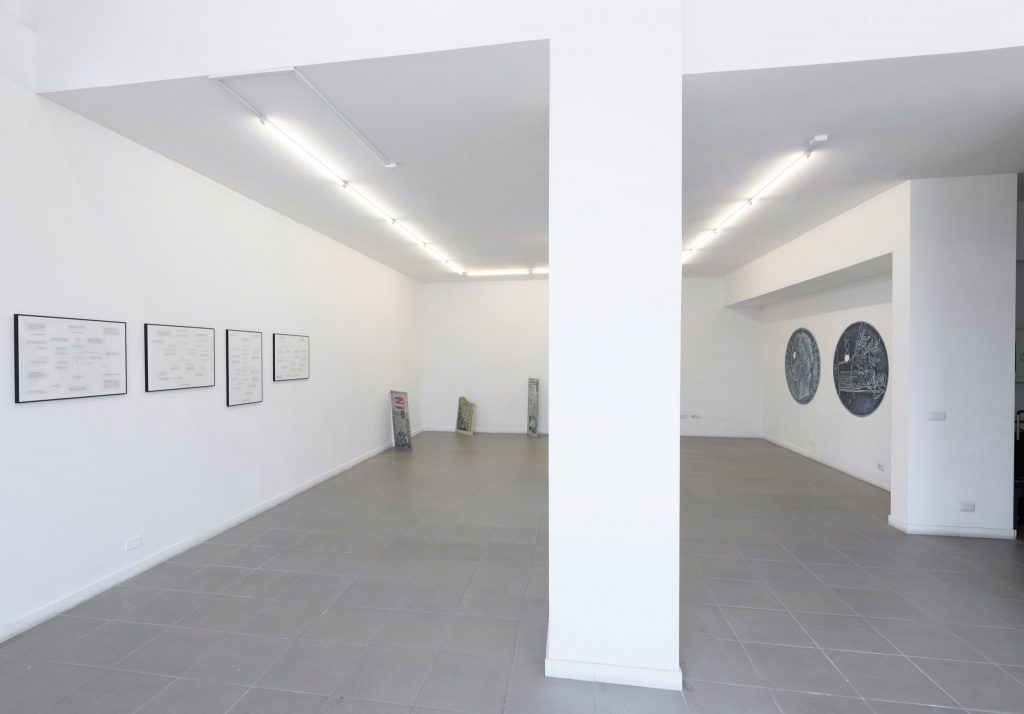
Valori, 2022, installation view (ground floor), photo by Giorgio Benni 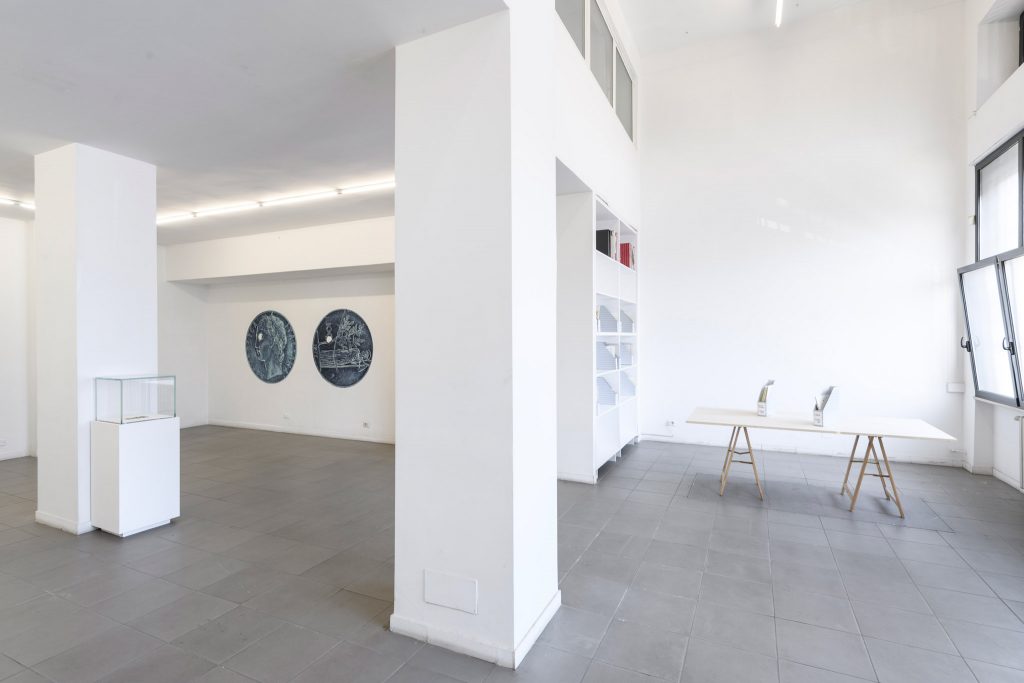
Valori, 2022, installation view (ground floor), photo by Giorgio Benni 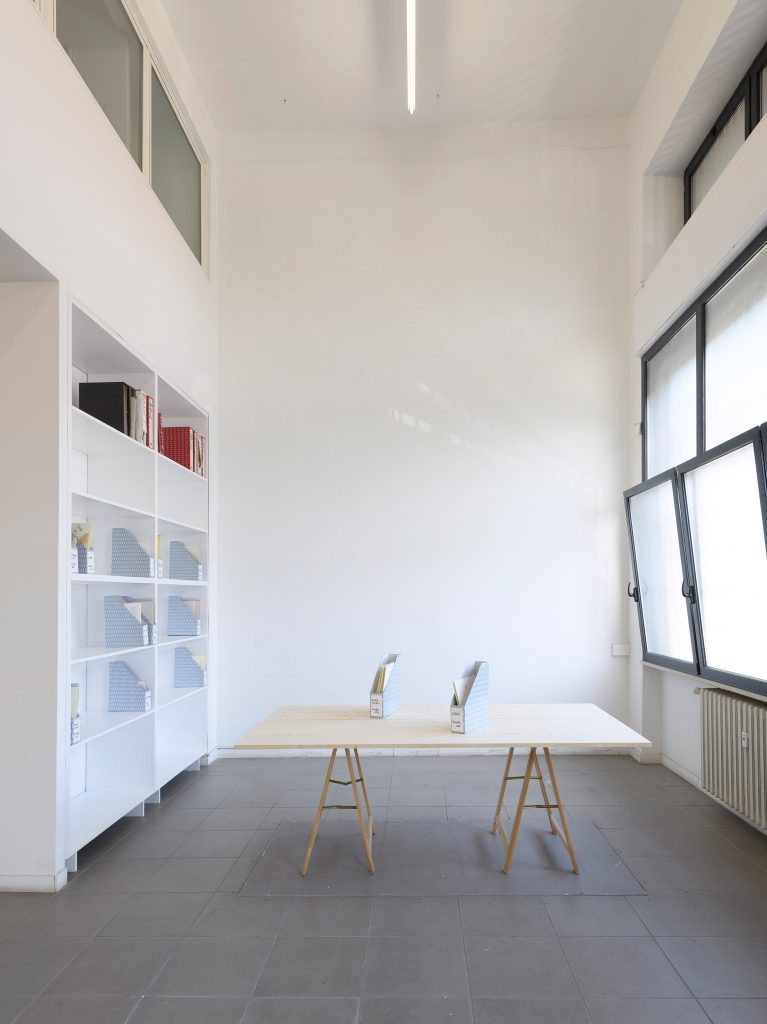
Valori, 2022, installation view (ground floor), photo by Giorgio Benni 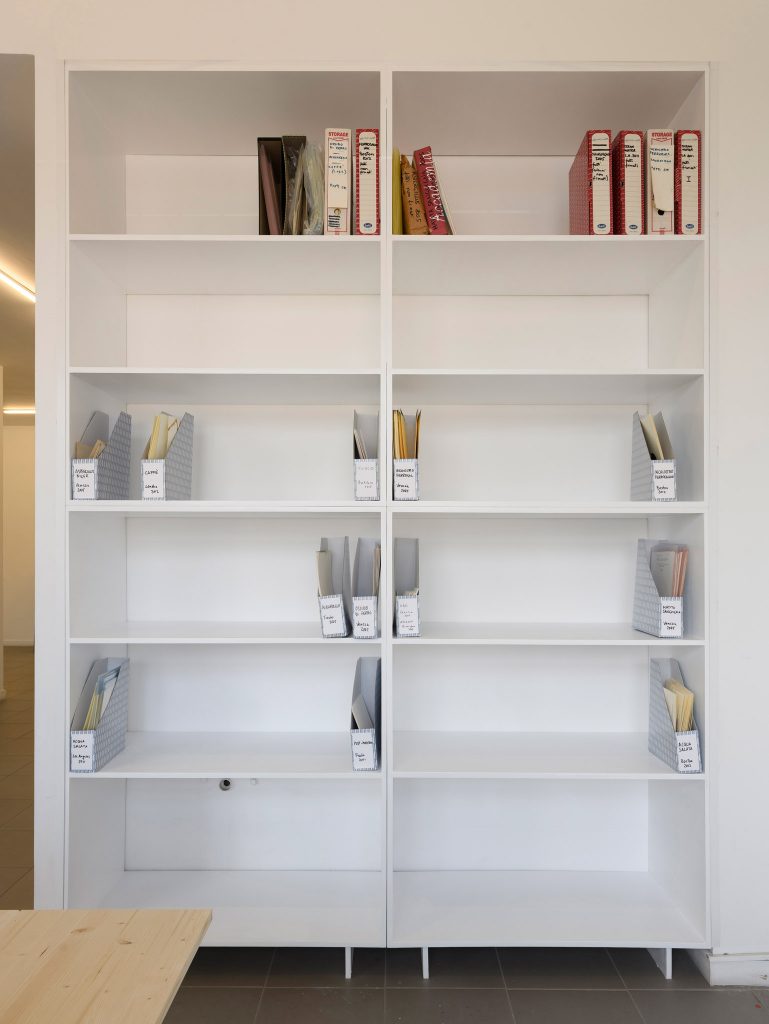
Valori, 2022, installation view (ground floor), photo by Giorgio Benni 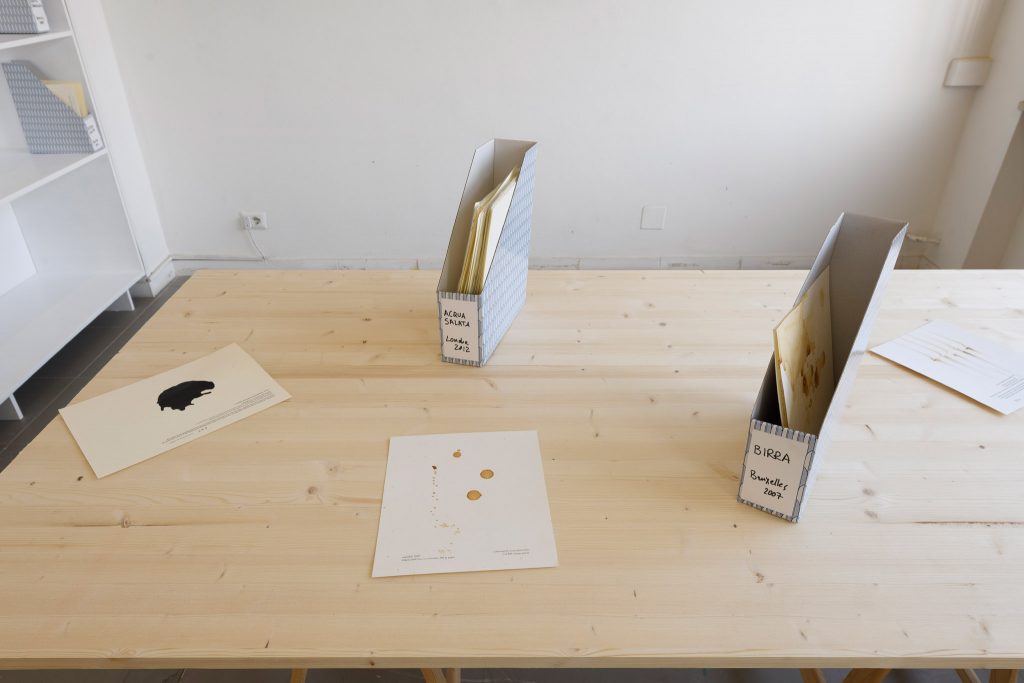
Valori, 2022, installation view (ground floor), photo by Giorgio Benni 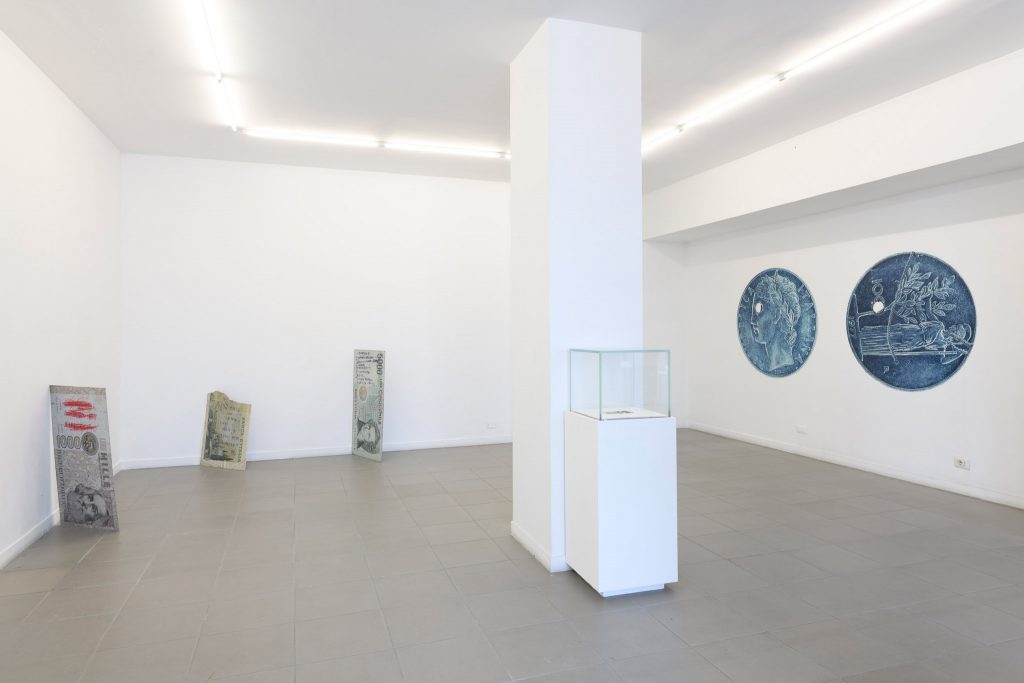
Valori, 2022, installation view (ground floor), photo by Giorgio Benni 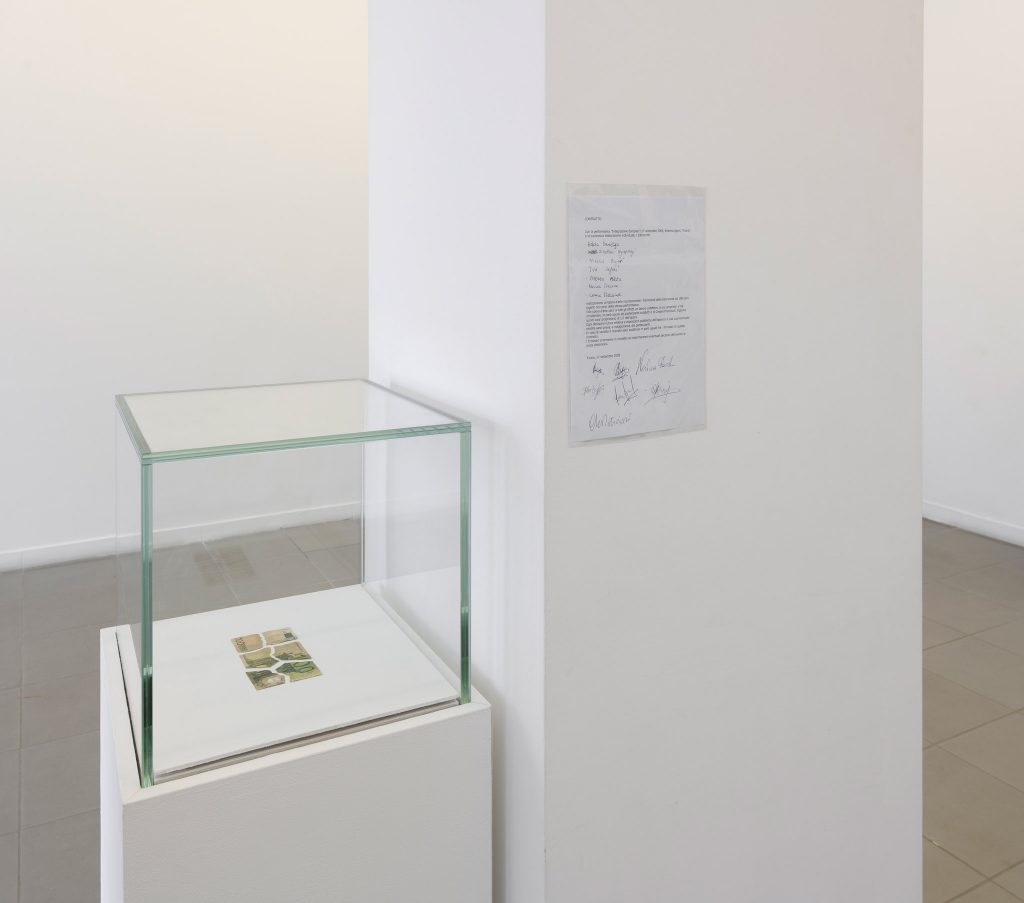
Valori, 2022, installation view (ground floor), photo by Giorgio Benni 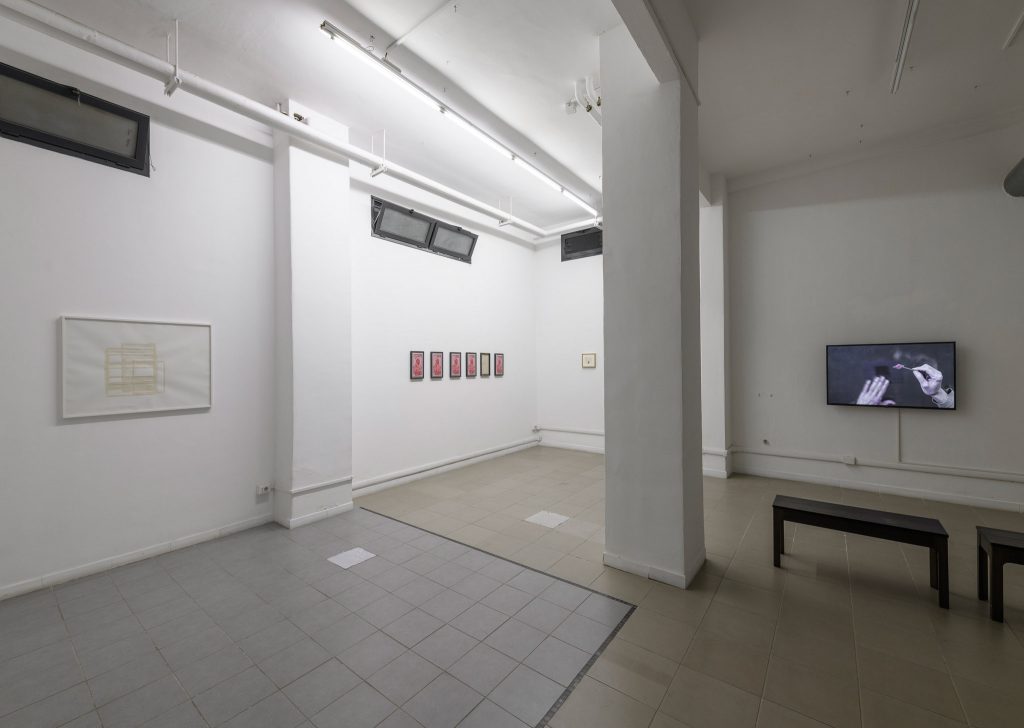
Valori, 2022, installation view (basement), photo by Giorgio Benni 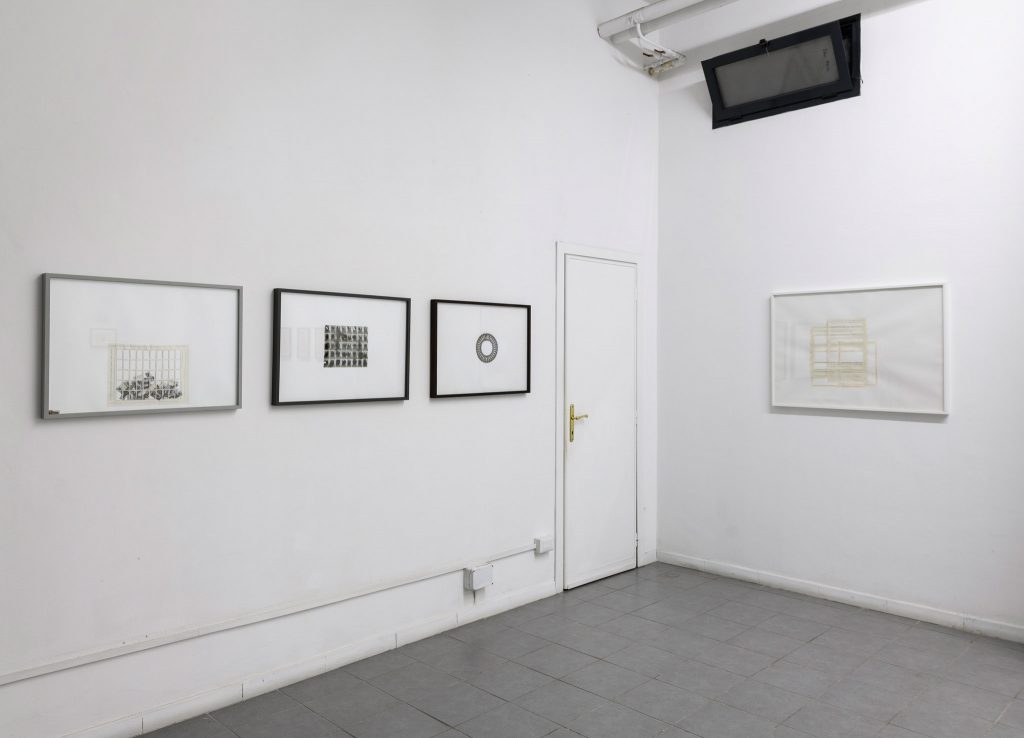
Valori, 2022, installation view (basement), photo by Giorgio Benni 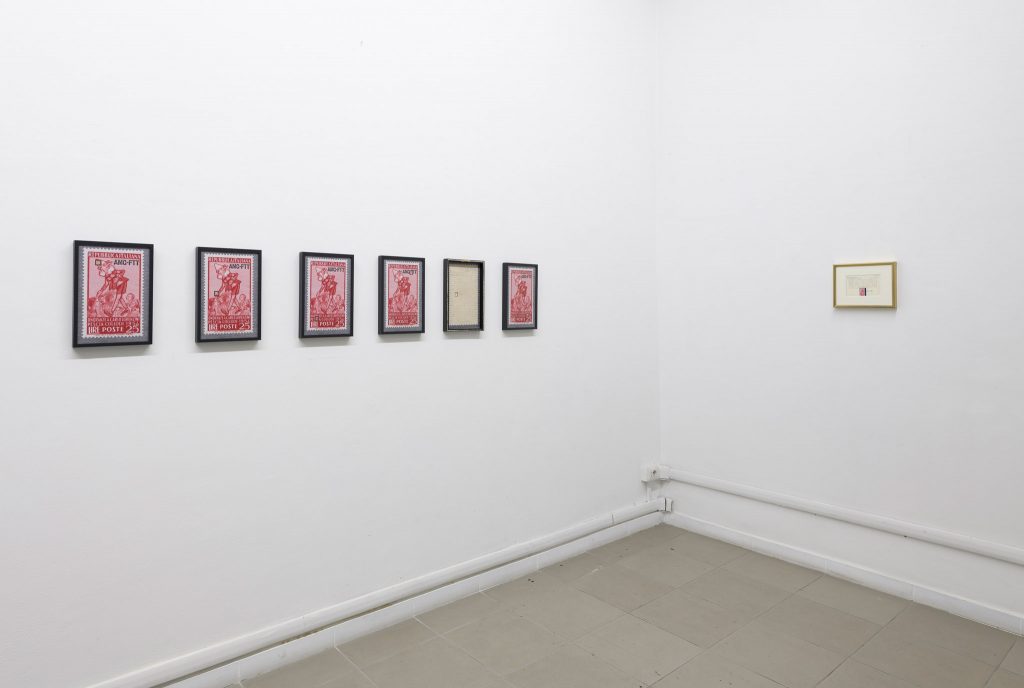
Valori, 2022, installation view (basement), photo by Giorgio Benni 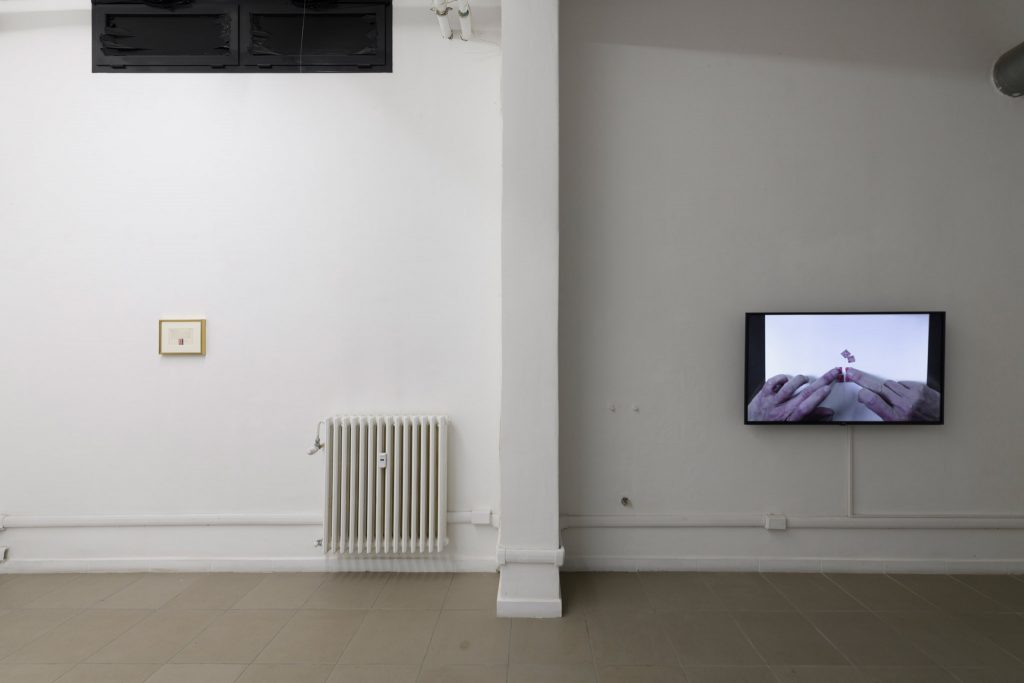
Valori, 2022, installation view (basement), photo by Giorgio Benni
Works
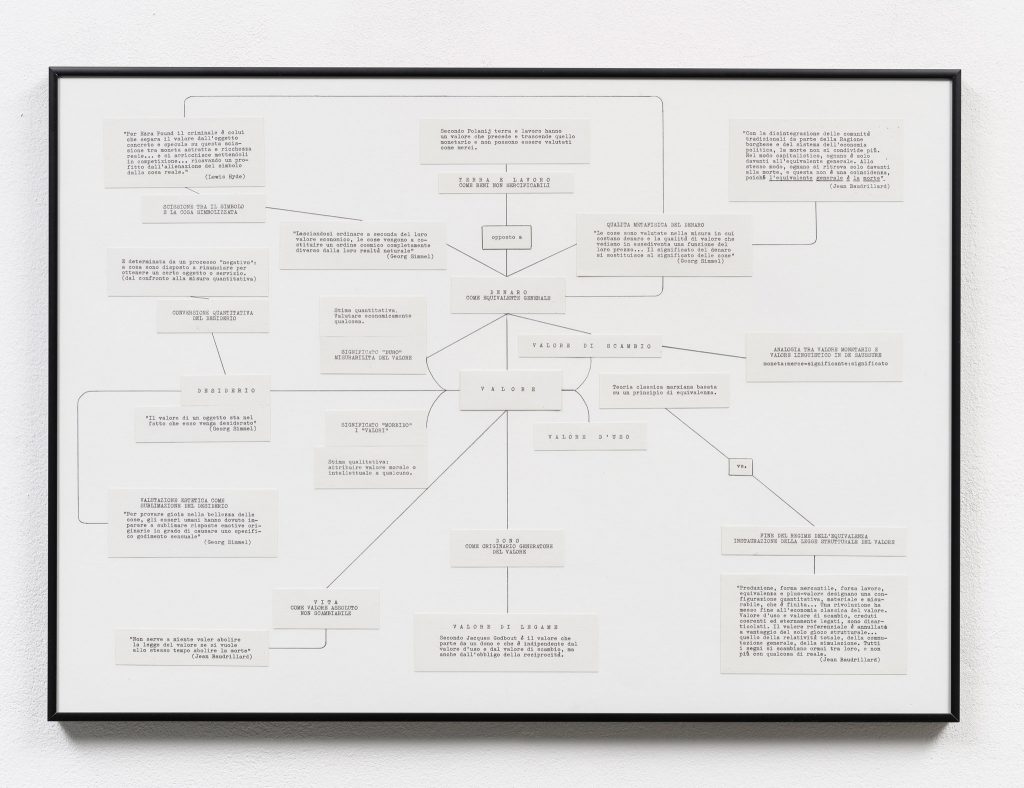
Introduzione I – Valore, 2022, mixed media on paper, 50×70 cm, photo by Giorgio Benni 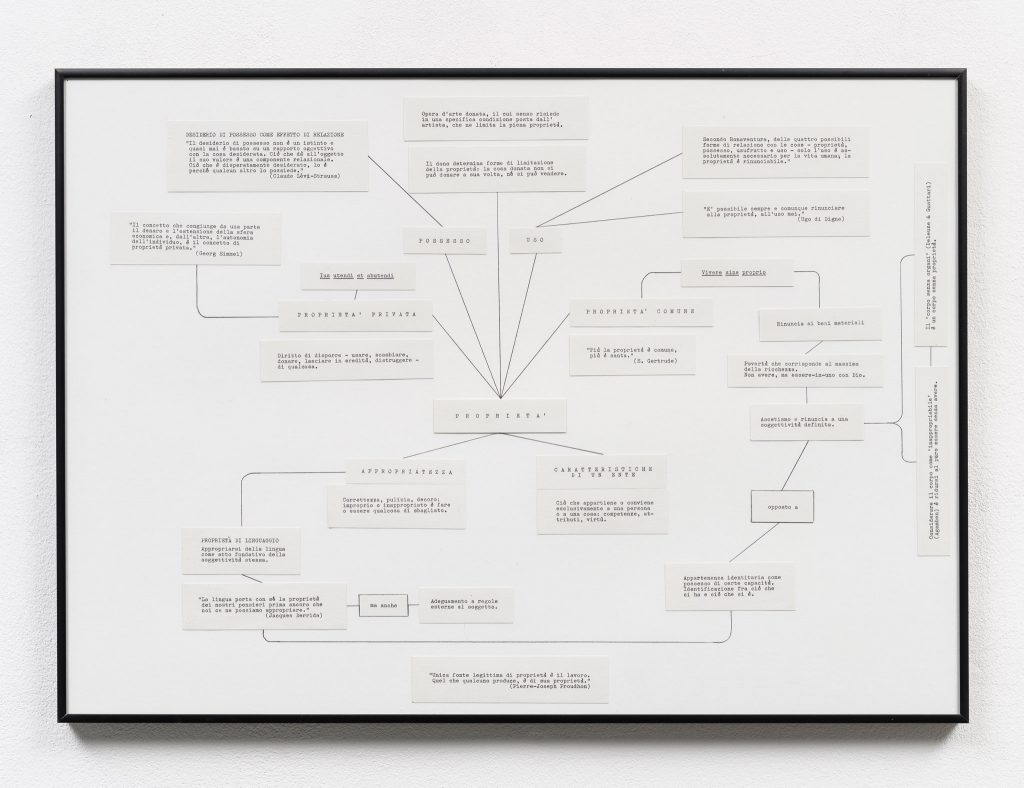
Introduzione II – Proprietà, 2022, mixed media on paper, 50×70 cm, photo by Giorgio Benni 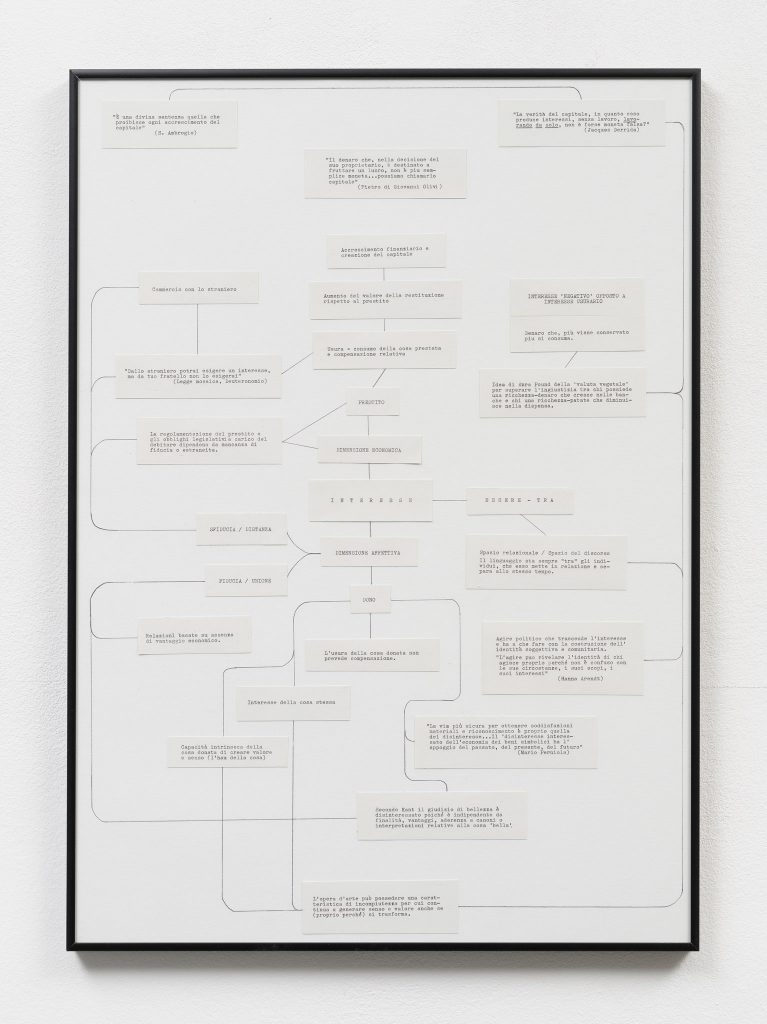
Introduzione III – Interesse, 2022, mixed media on paper, 70×50 cm, photo by Giorgio Benni 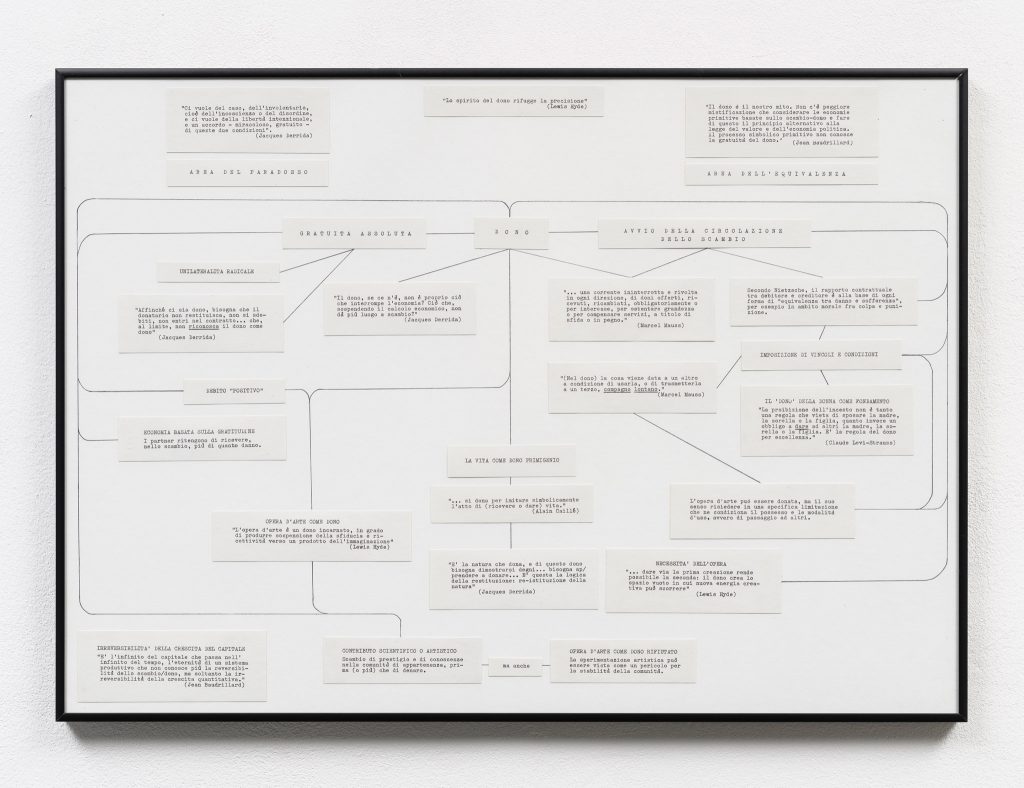
Introduzione IV – Dono, 2022, mixed media on paper, 50×70 cm, photo by Giorgio Benni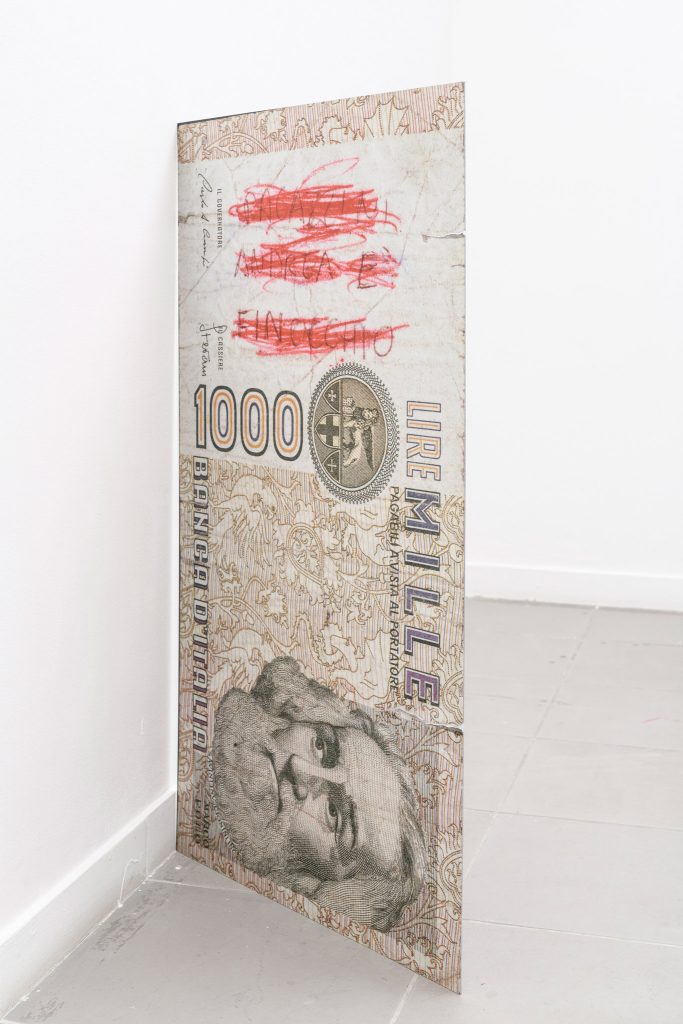
Mille Lire. Fatevi li cazzi vostri, 1988-2018, digital print on aluminium, 100×55 cm, photo by Giorgio Benni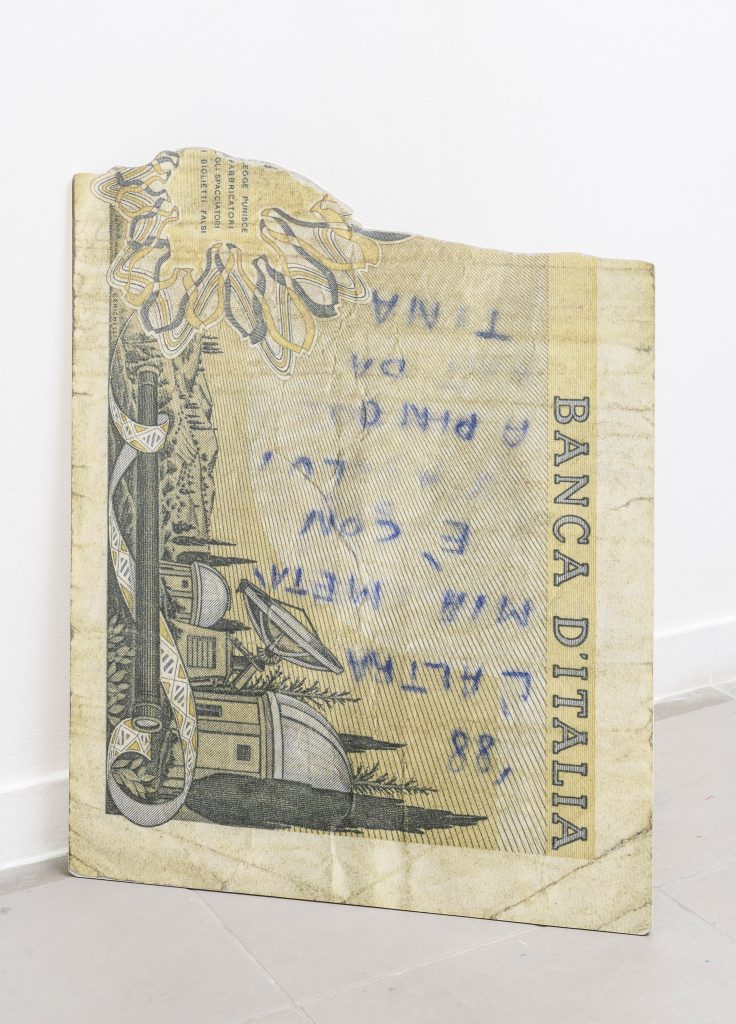
Duemila Lire. L’altra metà è con lui, 1988, cibachrome on wood, 76,5×60 cm, photo by Giorgio Benni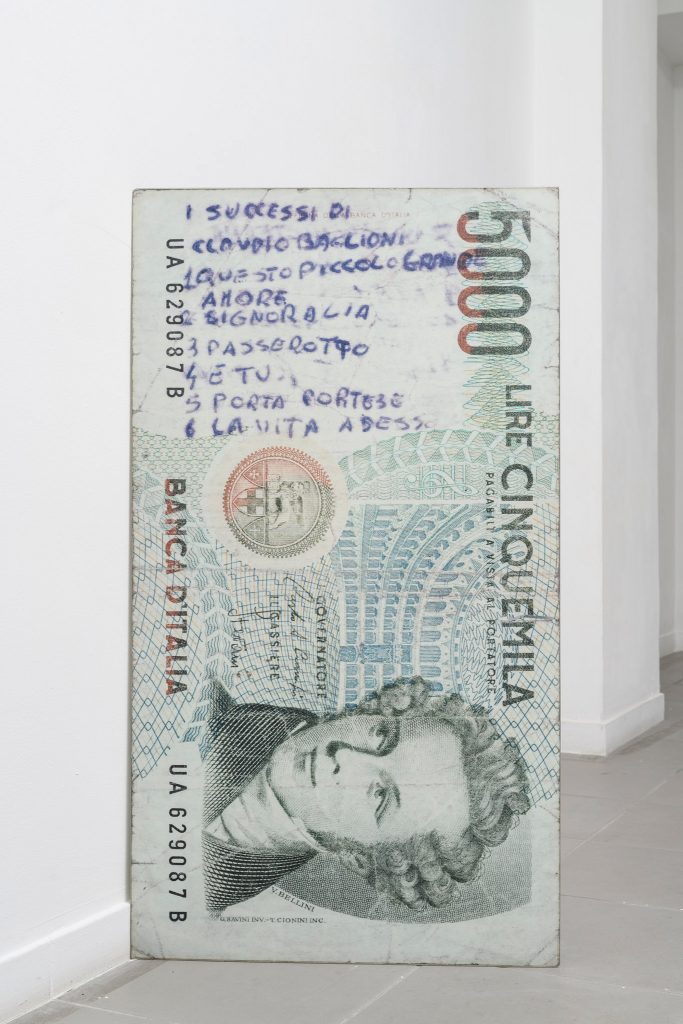
Cinquemila Lire. I successi di Claudio Baglioni, 1988, cibachrome on aluminium, 115,5×64 cm, photo by Giorgio Benni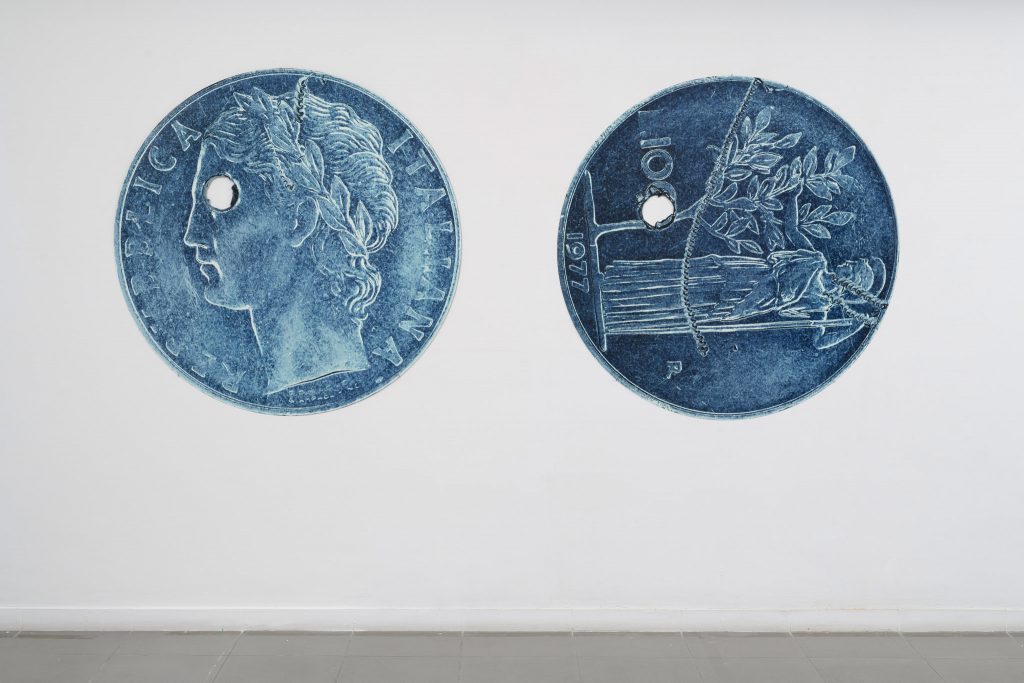
Studio per Cento Lire I, 1989, cibachrome on aluminium, Ø 124,5 cm, photo by Giorgio Benni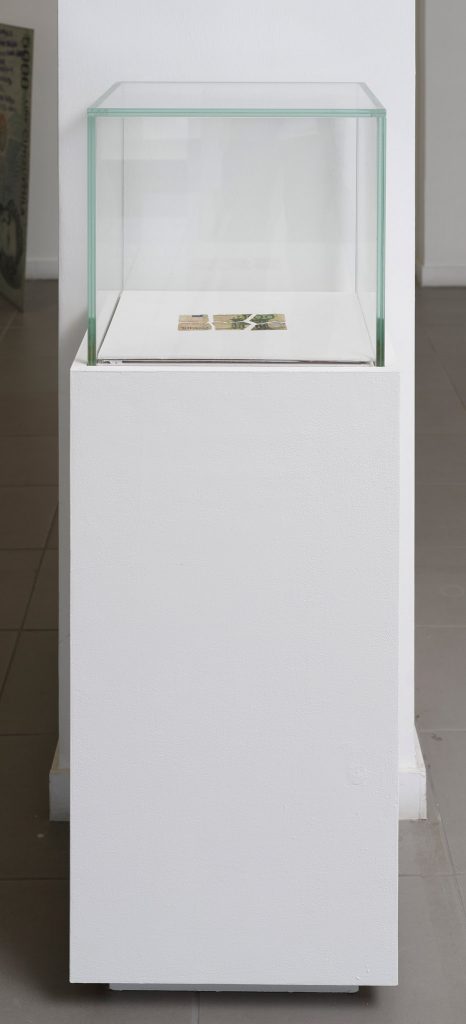
Integrazione Europea, 2005, banknote residue, agreement, Tirana 17 September 2005, photo by Giorgio Benni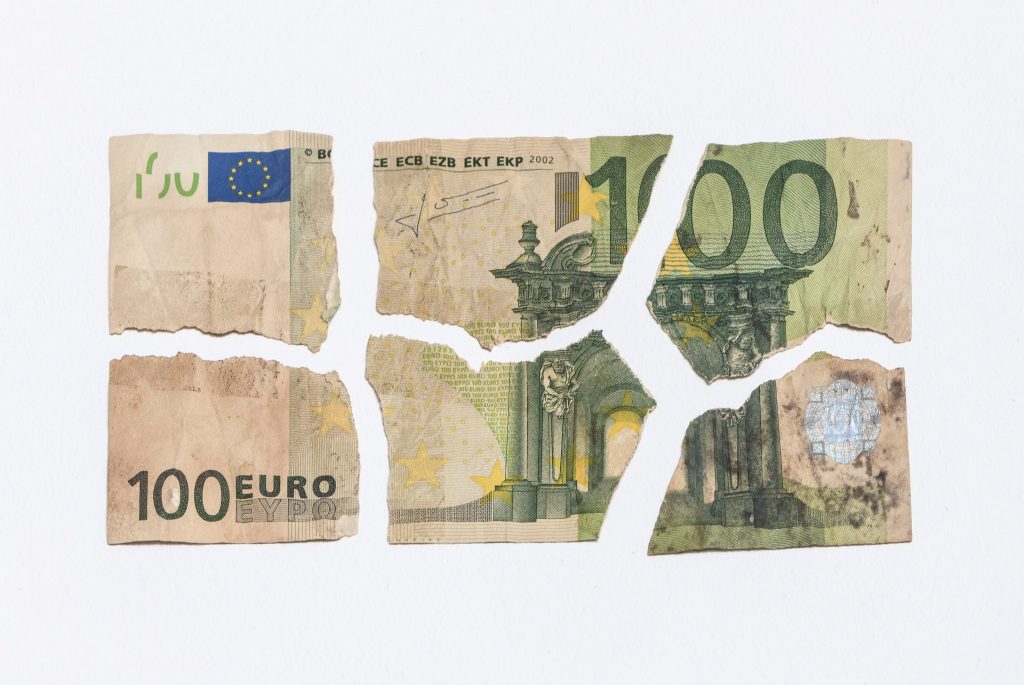
Integrazione Europea, 2005, banknote residue, Tirana 17 September 2005, photo by Giorgio Benni 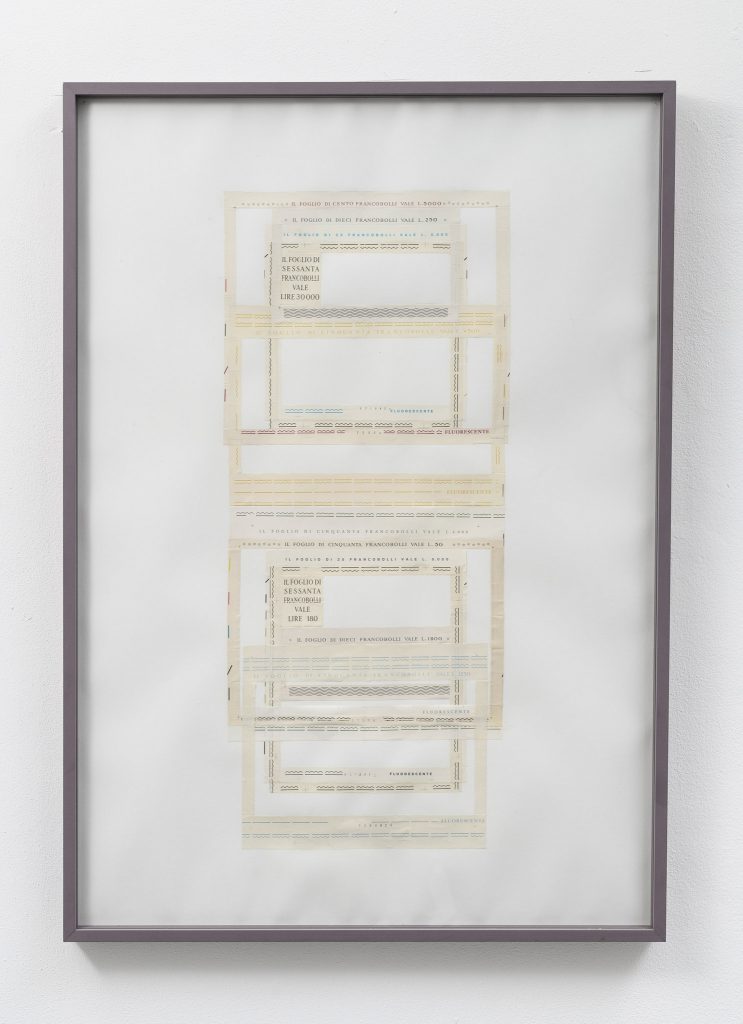
Il foglio di cento francobolli vale L. 5.000, 2021, mixed media on paper, 100×70 cm, photo by Giorgio Benni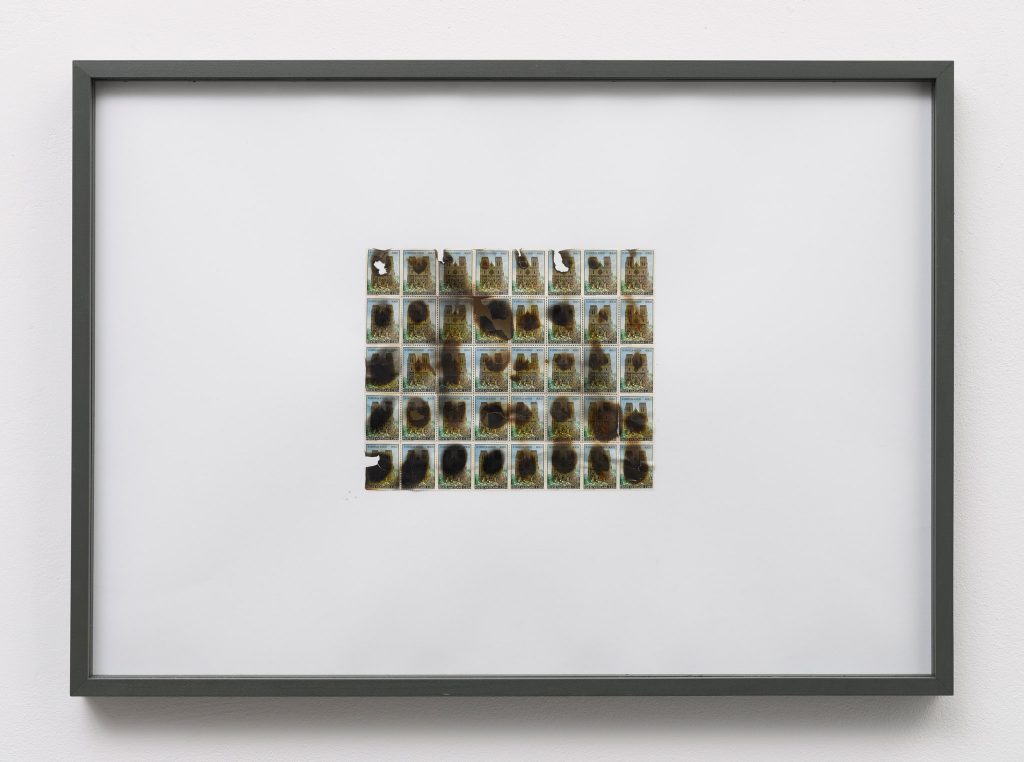
Notre Dame (Poste Vaticane L. 220), 2020, mixed media on paper, 50×70 cm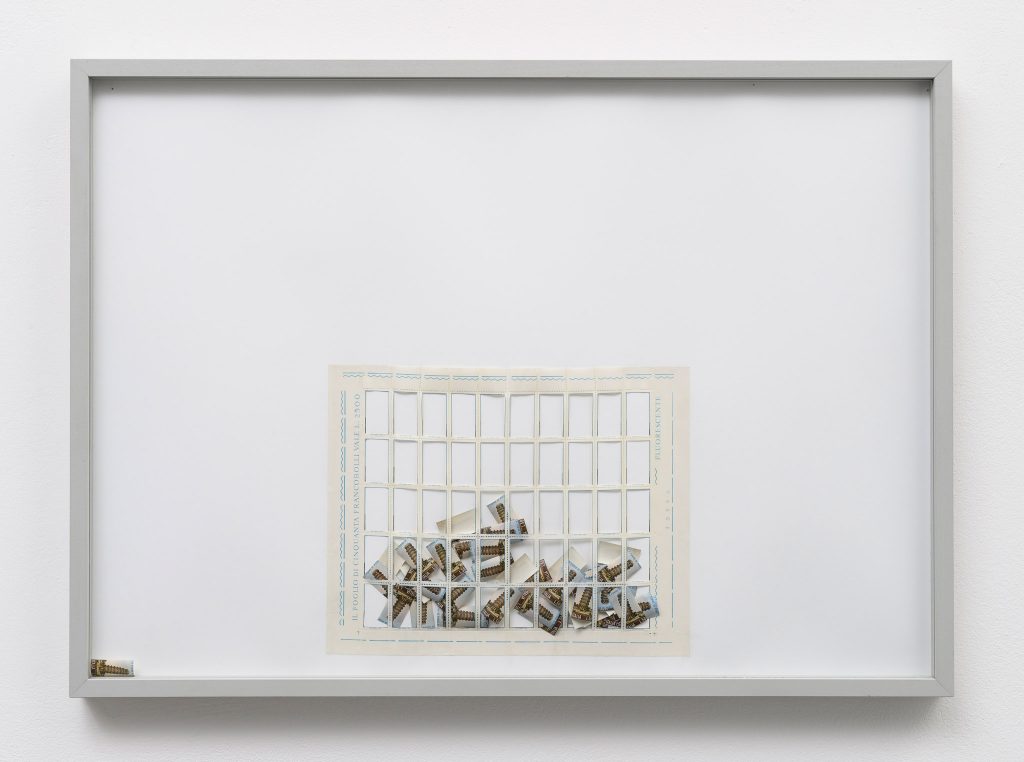
Torre di Pisa, 2020, mixed media on paper, 50×70 cm, photo by Giorgio Benni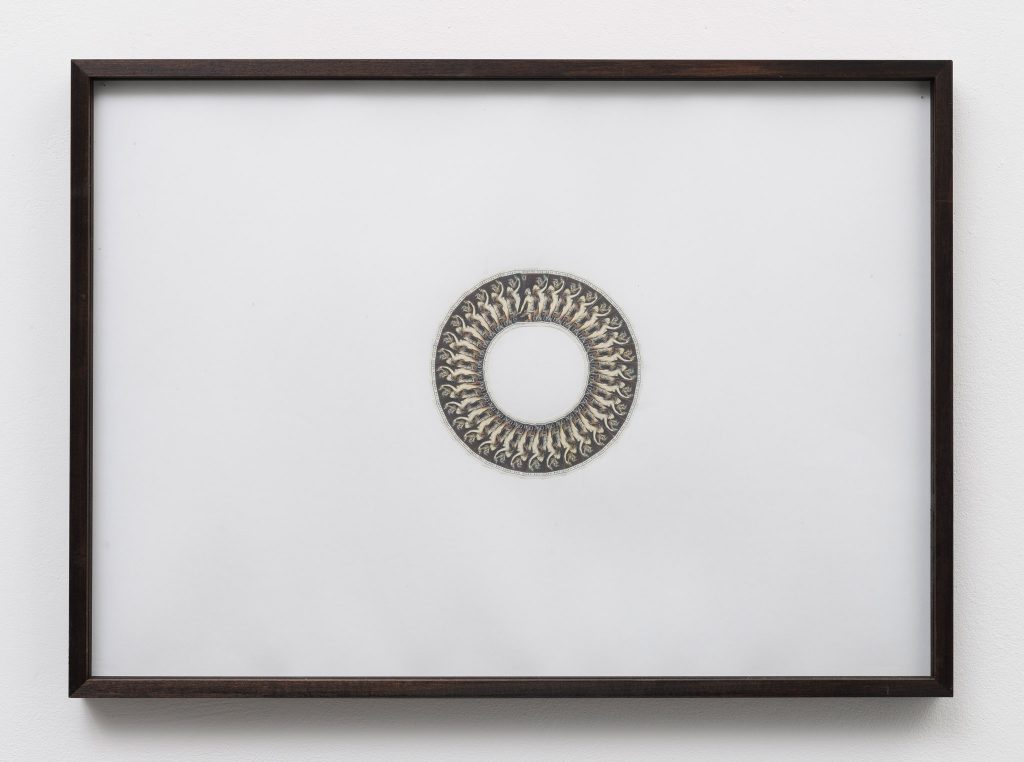
Apollo e Dafne, 2020, mixed media on paper, 50×70 cm, photo by Giorgio Benni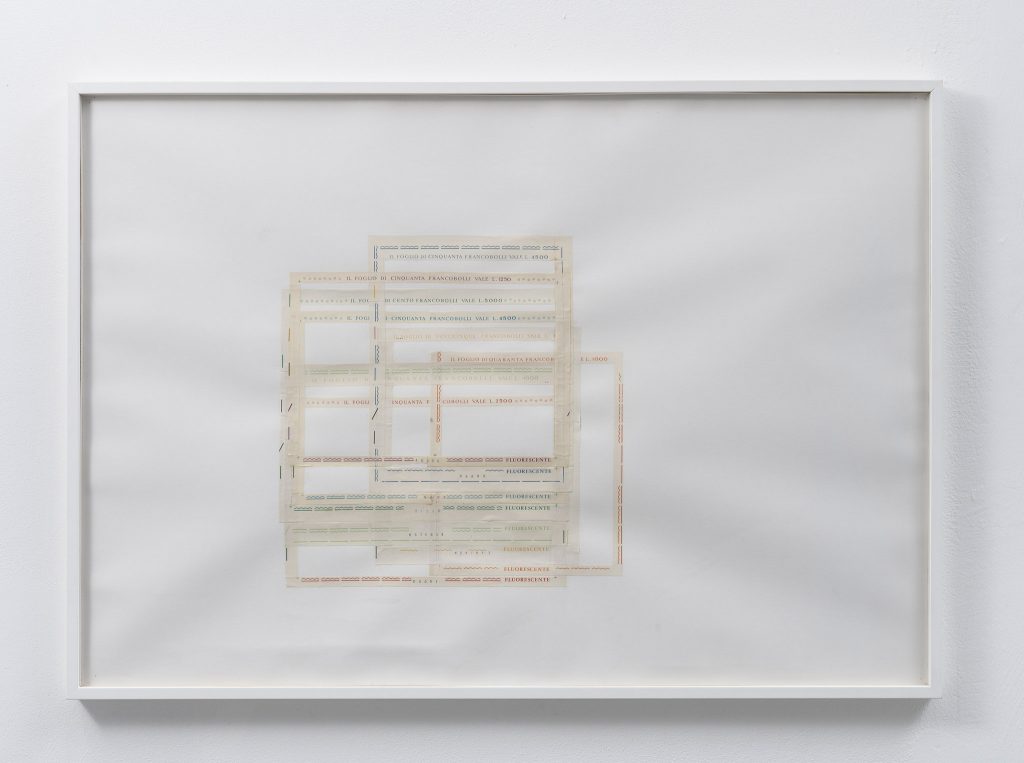
Fluorescente, 2018, mixed media on paper, 70×100 cm, photo by Giorgio Benni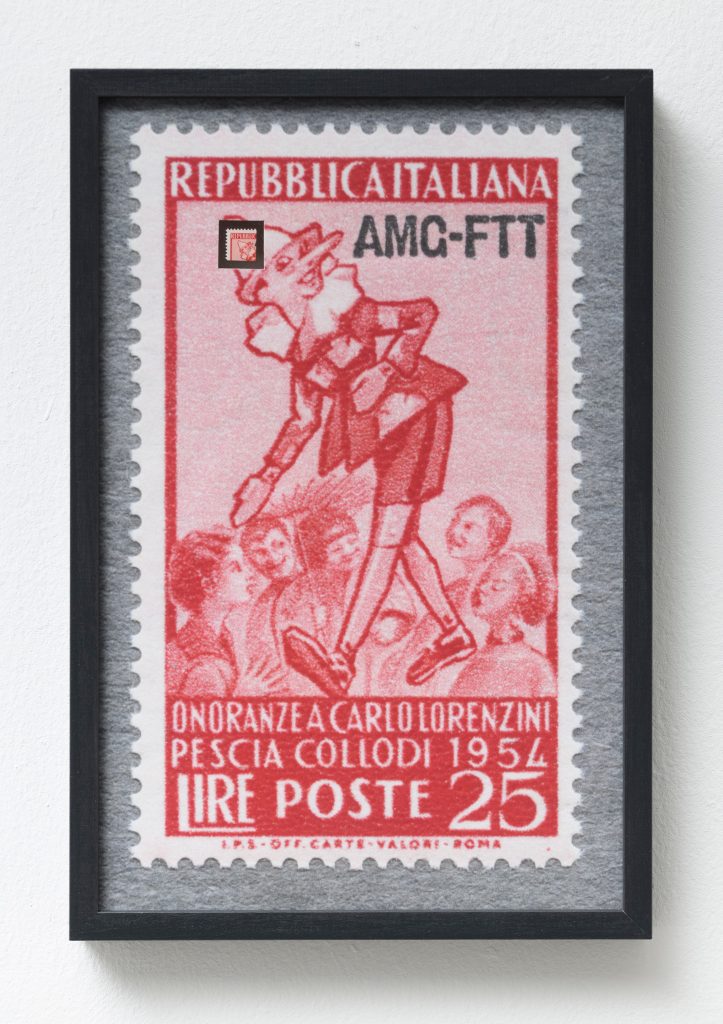
“Pinocchio” nuovo con gomma, Trieste Zona A, 1954, 25 Lire rosa carminio sovrastampato, I , 2022, 36 x 24 cm, photo by Giorgio Benni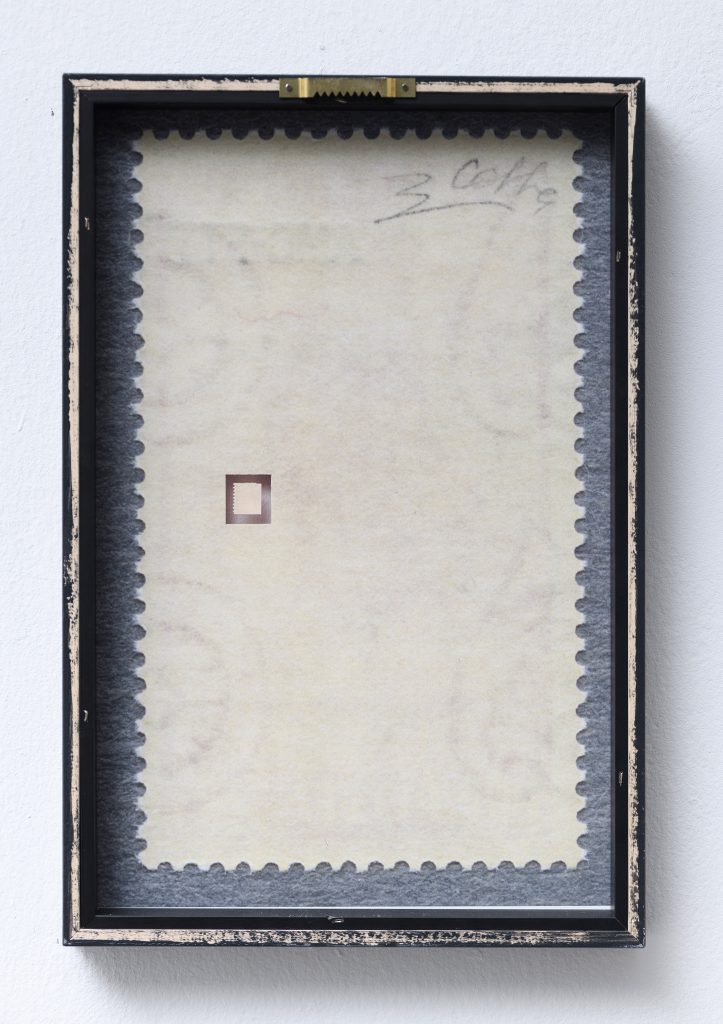
“Pinocchio” nuovo con gomma, Trieste Zona A, 1954, 25 Lire rosa carminio sovrastampato, V, 2022, 36 x 24 cm, photo by Giorgio Benni 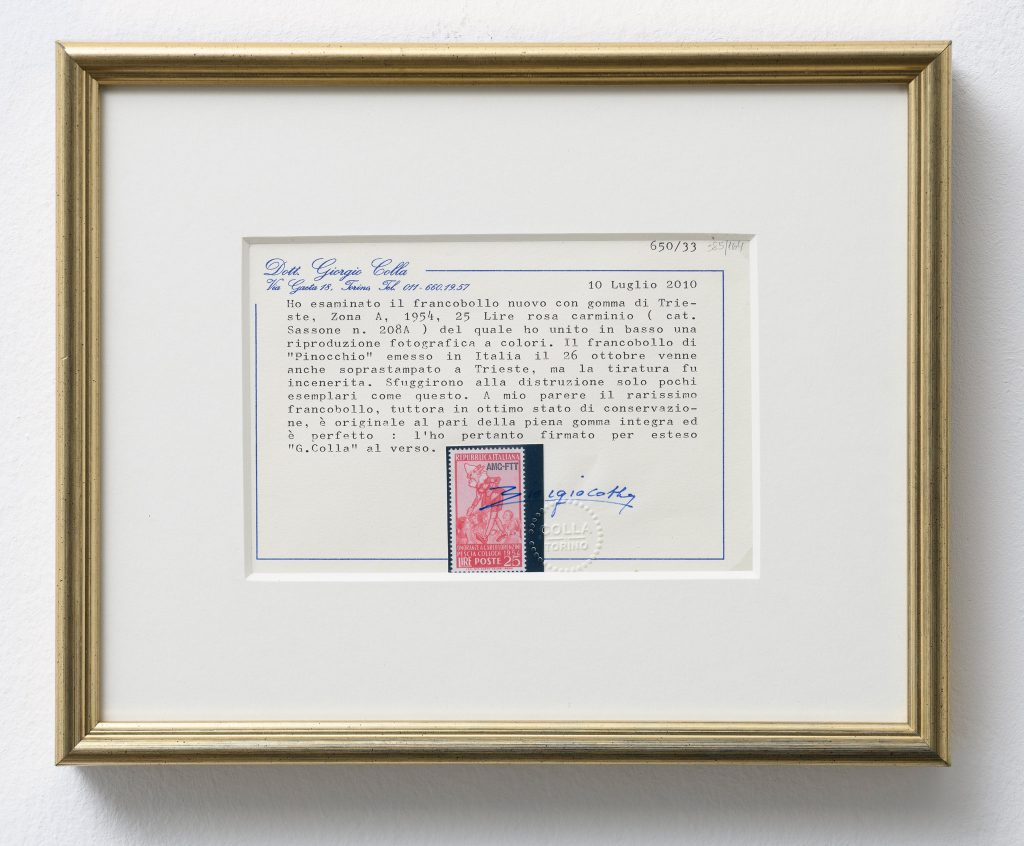
Philatelic expertise of “Pinocchio” nuovo con gomma, Trieste Zona A, 1954, 25 Lire red carmine overprinted (Sassone catalogue 208A; catalogue value 25.000 Euro), 2010, photo by Giorgio Benni 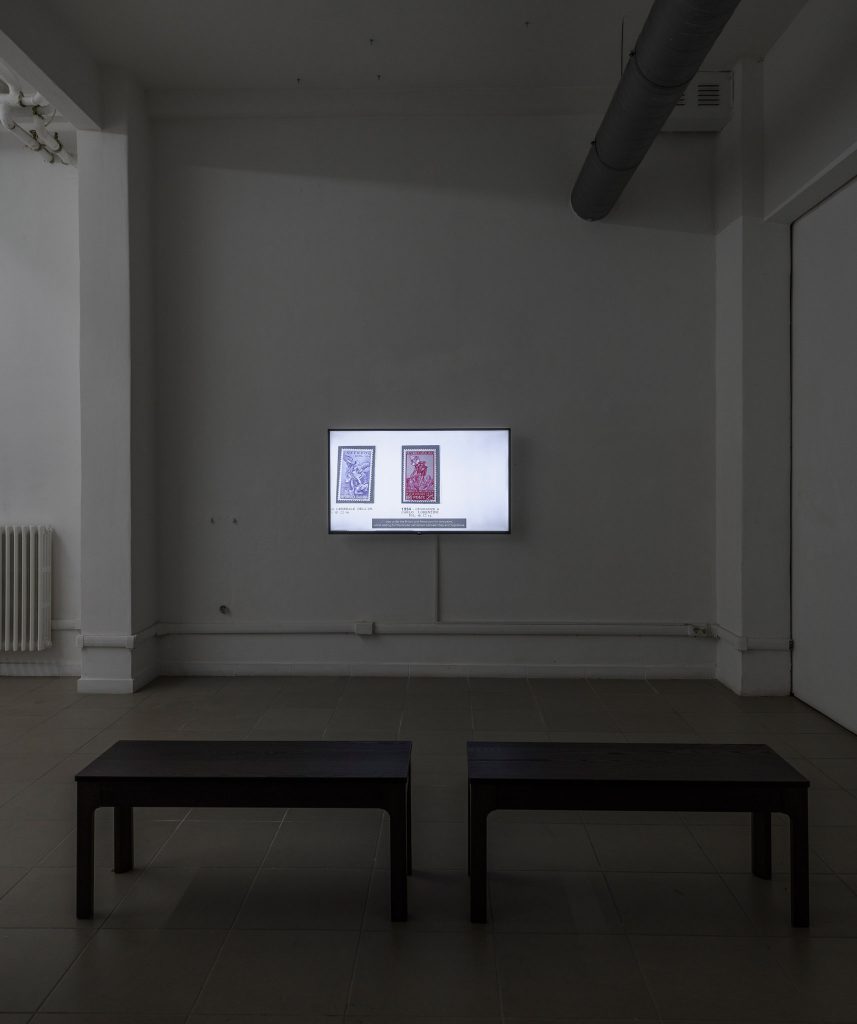
Certificate of authenticity of “Pinocchio” nuovo con gomma, Trieste Zona A, 1954, 25 Lire rosa carminio sovrastampato, I-II-III-IV-V-VI, 2022, video in loop, 9 minutes, photo by Giorgio Benni
The Gallery Apart is proud to announce their first collaboration with Cesare Pietroiusti who will be presenting his solo exhibition Valori in the gallery’s spaces.
Key figure in the conceptual art scene, not only in Italy, forerunner of the relational art practices, point of reference for many generations of younger artists, Cesare Pietroiusti has chosen The Gallery Apart as a tool to pursue his research on the topic of exchange and on the paradoxes that arise into the depths of any system, including art, and of the economic rules.
The artist himself presents his own exhibition with the following words: “This story begins towards the end of the Seventies when, first sporadically and then more frequently, anonymous authors undertook to enrich the 1,000 Italian lira banknotes with drawings, messages, signatures and scribbles. I do not know whether it was an aftermath of the inflation and therefore of the decline in the currency’s purchasing power, or of a consequence of the ‘participatory’ ideology, very popular at the time, or of a general debunking of the state authority and of its symbols; what I do know is that in the first part of the Eighties, I committed to collecting those scribbled banknotes, which, from 1987, I began to show in my exhibitions in the form of photo enlargements. I have always been aware of my inability to ‘create’ interesting images, so I engaged to collect and, sometimes, to exhibit, things that were always made by others, often involuntarily.
Only afterwards I understood that the issue was not only the valorisation of the anonymous creativity, so widespread yet not acknowledged, but, more significantly, the meeting between the real and the symbolic on those banal pieces of paper: between a felt-tip pen mark and purchasing power; between a fragment of cellulose (and glue, and ink) and a number; between the epithelial residues from dozens of fingers, possibly dirty and sweaty, and finance.
I think that my research on banknotes, from the above-mentioned works to the performances that involve their cancellation using sulphuric acid, or their ingestion by the artist followed by their return to the legitimate owner after their recovery from the faeces, is characterized by the persistent lingering over that point-of-contact that, as with the tongue, lets touch the anatomy with the signification, the body with the language, for a moment before their inevitable separation. In the current progressive virtualization of the economic transactions, paper money lies on that edge as a sort of an ‘endangered’ object.
The stamp too, which shares many characteristics with the banknote (the nominal value, the anti-fraud procedures etc.), is an object that until few decades ago was regularly used and that today has nearly disappeared. Swept away by the electronic mail, by franking machines and by the increasingly numerous and faster methods of interpersonal communication, interest in stamp collecting has been in decline, and it is enlightening to observe the efforts by those working in the field to maintain market quotations which are clearly no longer realistic.
Few years ago, I inherited what in jargon is called an ‘important’ collection from my father, an enthusiastic philatelist, and after a period marked by frustration – and by rancour against him – due to an evident wrong and to me incomprehensible investment, I decided to enter that world. I did it in a way that any philatelist would consider heterodox (or even sacrilegious). However, I gradually began to experience the auratic fascination of those small, coloured rectangles and, maybe, I am still trying to understand their value. And I do it through the only ways I know, the artistic research: that is, experimental research not compromised by stereotypes and conventions (disciplinary, financial, social, moral) but, conversely, inspired by game.
The exhibition Valori features works on banknotes, stamps from the Eighties, and on themes such as exchange and gift, along with unprecedented works created in the last few months, of which one has been purposedly designed for this exhibition.”
The Gallery Apart è orgogliosa di annunciare Valori, la mostra personale con cui Cesare Pietroiusti inizia la sua collaborazione con la galleria.
Figura imprescindibile della scena artistica concettuale non solo italiana, anticipatore di pratiche artistiche relazionali, punto di riferimento per molte generazioni di artisti più giovani, Cesare Pietroiusti sceglie The Gallery Apart quale strumento per proseguire la ricerca sul tema dello scambio e sui paradossi che sorgono nelle pieghe dei sistemi, compreso quello dell’arte, e delle regole economiche.
Lo stesso artista introduce così il progetto espositivo: “Questa storia comincia verso la fine degli anni ’70 quando, prima sporadicamente e poi sempre più spesso, anonimi autori si misero ad arricchire con disegni, messaggi, firme e sgorbi, le banconote da mille lire. Non so se si trattasse di uno strascico dell’inflazione e quindi della diminuzione del potere d’acquisto del denaro corrente, o di un effetto dell’ideologia della ‘partecipazione’, molto in voga all’epoca, o ancora di una generalizzata smitizzazione dell’autorità statale e dei suoi simboli; quello che so è che io mi dedicai, nei primi anni ’80, a collezionare quelle banconote scarabocchiate e, a partire dal 1987, a proporne, nelle mostre, degli ingigantimenti fotografici. Da sempre consapevole della mia incapacità di ‘creare’ immagini interessanti, mi dedicavo infatti alla raccolta, e, in qualche caso, all’esposizione, di produzioni, prevalentemente involontarie, rigorosamente altrui.
Solo in seguito ho capito che la questione non era soltanto la valorizzazione della creatività anonima, tanto diffusa quanto non riconosciuta, ma, più significativamente, l’incontro, su quei banalissimi pezzi di carta, fra il reale e il simbolico: fra una traccia di pennarello e un potere d’acquisto; fra un frammento di cellulosa (e colla, e inchiostro) e un numero; fra i residui epiteliali di decine di dita, magari sporche e sudate, e la finanza.
Credo che la mia ricerca sulle banconote, dai lavori appena citati fino alle performance che prevedono la loro cancellazione con l’acido solforico, oppure la loro ingestione da parte dell’artista con successiva restituzione al legittimo proprietario dopo il recupero dalle feci, sia caratterizzata dall’insistenza a soffermarsi su quel punto-di-incontro che, come per la lingua, fa toccare per un attimo, prima della loro irriducibile separazione, l’anatomia con la significazione, il corpo con il linguaggio. Su quel bordo il denaro cartaceo si pone, nella attuale progressiva virtualizzazione delle transazioni economiche, come una sorta di oggetto ‘in via di estinzione’.
Anche il francobollo, che condivide con la banconota molte caratteristiche (il valore nominale, le procedure anti-falsificazione ecc.), è un oggetto fino a pochi decenni fa usato ovunque comunemente e, oggi, quasi scomparso. Spazzato via dalla posta elettronica, dalle macchine affrancatrici e dalle sempre più numerose e veloci metodologie di comunicazione interpersonale, il francobollo ha anche perduto gran parte dell’interesse collezionistico, ed è istruttivo studiare i tentativi degli operatori di quel settore volti a mantenere quotazioni di mercato evidentemente non più realistiche.
Qualche anno fa ho ereditato da mio padre, appassionato filatelista, una collezione, come si dice in gergo, ‘importante’ e, dopo un primo periodo segnato dalla frustrazione – e dall’astio nei suoi confronti – per l’evidenza di un investimento sbagliato e per me incomprensibile, ho deciso di entrare in quel mondo. L’ho fatto in un modo che qualunque filatelico considererebbe eterodosso (o addirittura sacrilego) ma, passo passo, ho cominciato a subire anche io il fascino auratico di quei rettangolini colorati e, forse, sto ancora cercando di capirne il valore. E lo faccio con gli unici modi che conosco, quelli della ricerca artistica: cioè di una sperimentazione non pregiudicata da stereotipi e convenzioni (disciplinari, finanziarie, sociali, morali) ma, casomai, ispirata al gioco.
Nella mostra Valori sono esposte opere sulle banconote, sui francobolli e sul tema dello scambio e del dono, dagli anni ’80 fino a lavori inediti realizzati negli ultimi mesi, di cui uno in particolare pensato specificamente per questa mostra.”
share on